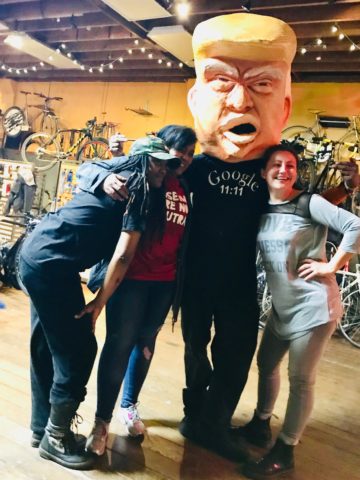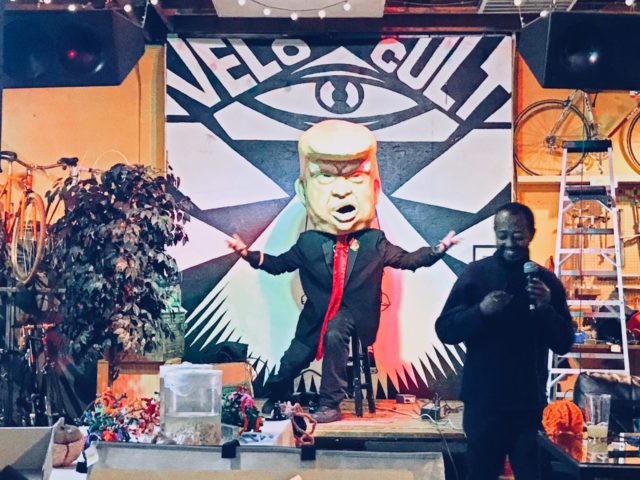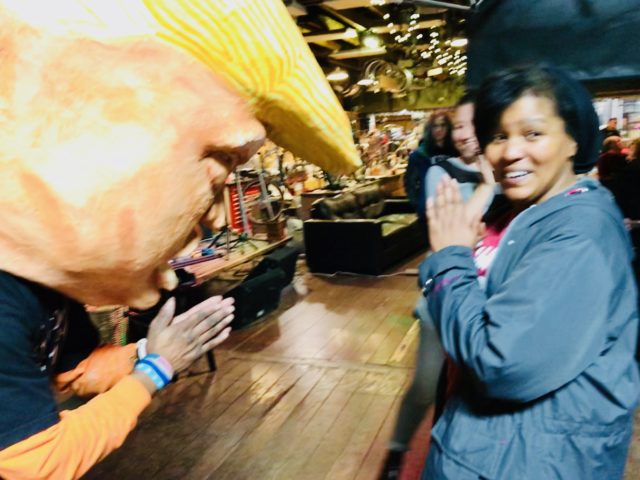“We all have cultural bias, racial bias. One of the difficult things around this subject is to deny that we have places we go to subconsciously, and unless you consciously decide that that’s wrong and you’ve got to do something about it, especially if you’re in a position of power, it won’t change.” – David Oyelowo

Our particular time is the product of brains in environments, like all brains bursting with biases and assumptions, predictions and expectations that serve to define a social order. That order may lack justice, reek of inequality, insulate and elevate a wealthy few, prove harmful or deadly to many – and appear ageless, timeless and permanent.

But it doesn’t have to. Tremendous social change has happened before, driven by those who uncover biases, often implicit, and challenge corrupt institutional authority. Tonight’s Velo Cult brought together current brain research on racial prejudice, and the art and activism essential for shifting the climate towards equality and justice for all…
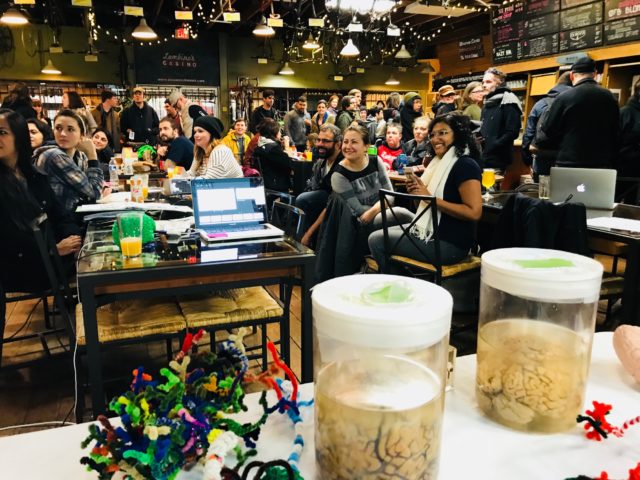
Teressa Raiford, the founder of Don’t Shoot Portland, began by asking the audience to consider solutions, by building a paper wall of ideas and approaches provoked by tonight’s discussion. She also introduced Donald Trump (a.k.a. Jermaine Harris), a staple of the Backbone Campaign, an arts-integrated nonprofit aimed at creatively making change.
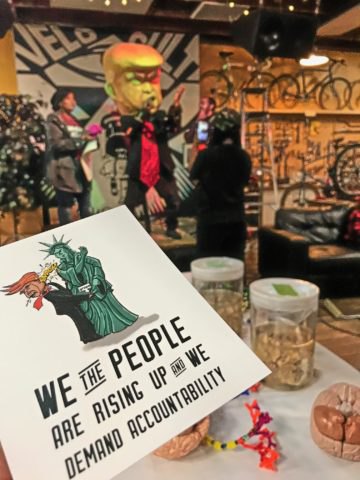

Binyam Nardos, a postdoctoral researcher in the Fair Neuroimaging Lab at OHSU, and Director of the lab’s Youth Engaged in Science outreach program, then spoke about how race, emotional arousal, and racial bias affect our perceptions, and our decisions – some with life threatening implications.
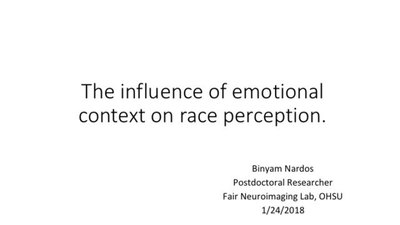
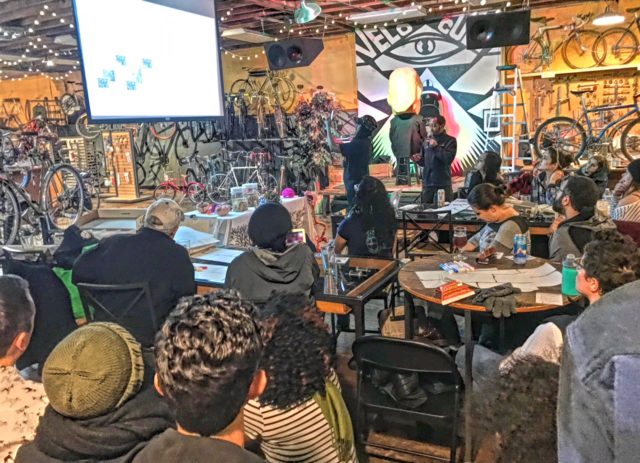
“What we’ve been doing is looking at the data and we know that police somehow manage to de-escalate, disarm and not kill white people every day…” – Jesse Williams
Reports by media outlets and community organizations that track and document police violence demonstrate that young black males are at a particularly heightened risk for fatal police encounters. In 2015, Binyam noted, at least 306 black people were killed by police, and black males age 15 – 34 were nine times more likely to be killed than any other demographic group. These young black men make up 2% of the U.S. population, but 15% of all deaths from encounters with police.
LEARN MORE: The Counted, People Killed By Police in the U.S.
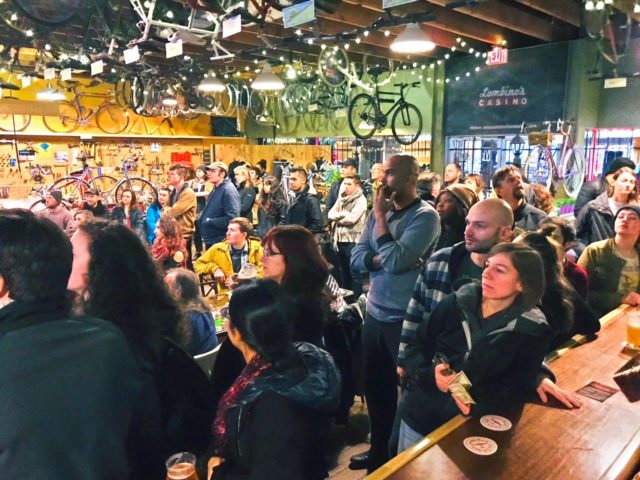
“We can never be satisfied as long as the Negro is the victim of the unspeakable horrors of police brutality.” – Martin Luther King, Jr.
LEARN MORE: Deadly Force, in Black and White
LEARN MORE: Fatal Force
And this is not about crime, stressed Binyam. The vast majority of black people killed by police were unarmed…
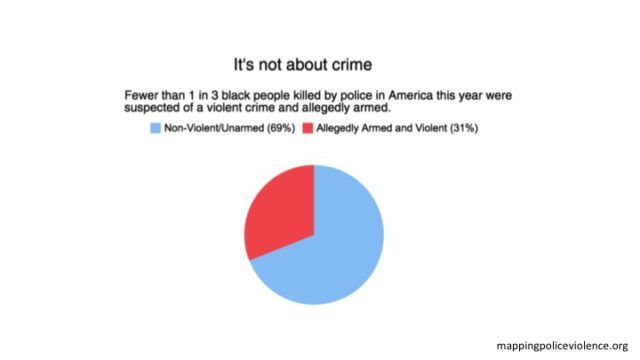
Binyam acknowledged that there are many possible underlying causes for reported violent interactions between police officers and black individuals. To shed more light, he explained, one approach taken by psychologists and neuroscientists is to investigate potential behavioral and intrinsic brain-based biases when people perceive black versus white faces…
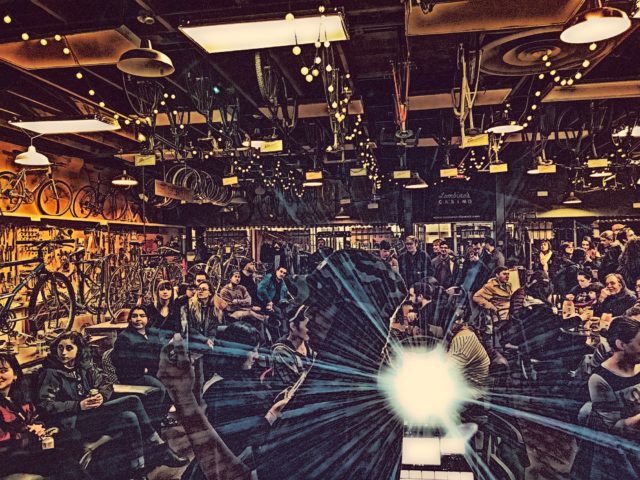
One notable study (B. Keith Payne, 2001) reports that brief presentation of black faces (versus white faces) as racial cues can actually “prime” a quicker response to weapons or items of danger.
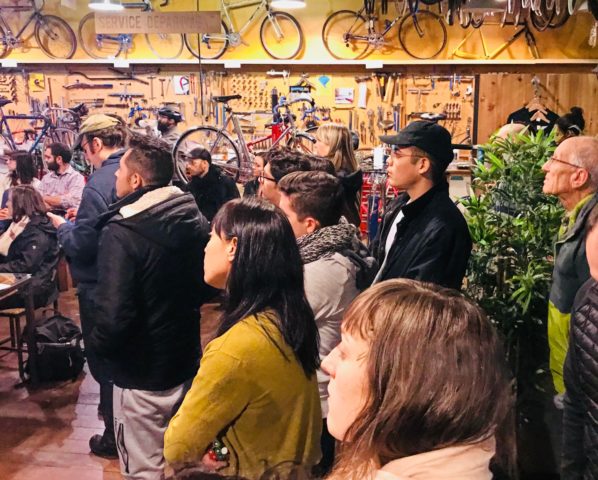
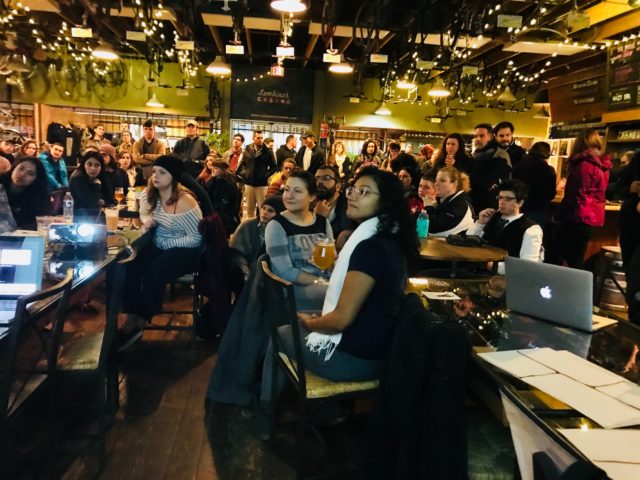
LEARN MORE: Prejudice and Perception, The Role of Automatic and Controlled Processes in Misperceiving a Weapon
That same manipulation increases the mis-identification of tools as weapons for black, relative to white, face cues. This occurs even if the face cue is flashed so quickly that the participant doesn’t even know, consciously, that it was there.
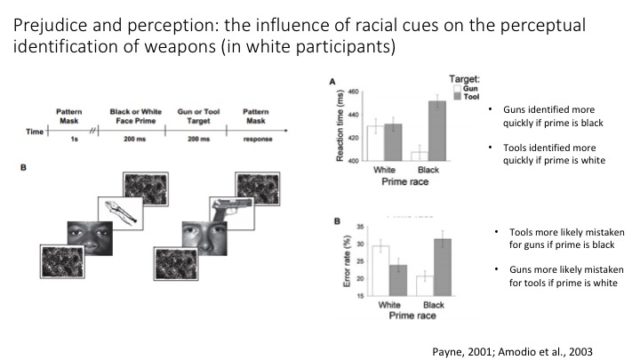
LEARN MORE: Split-Second Decisions and Unintended Stereotyping
TEST YOUR OWN BIAS: Implicit Association Task
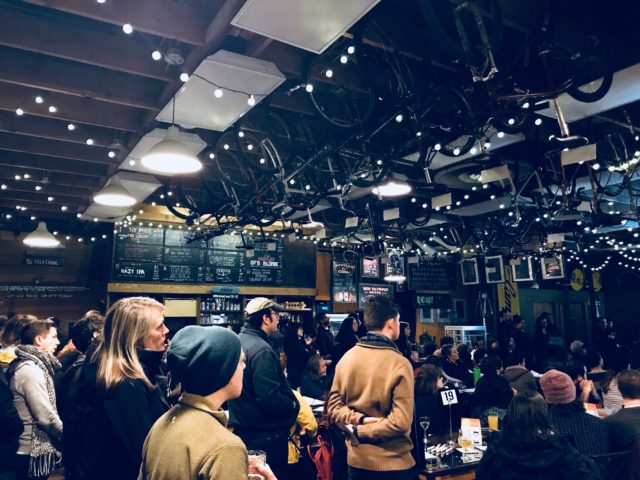
Binyam described how Joshua Correll at the University of Colorado Boulder and his colleagues pioneered the use of a videogame called “The Police Officer’s Dilemma” to examine the effects of race on the decision to shoot. Black or white characters, holding either guns or other objects, are presented quickly on screen, and subjects are asked to fire only when those individuals are armed.
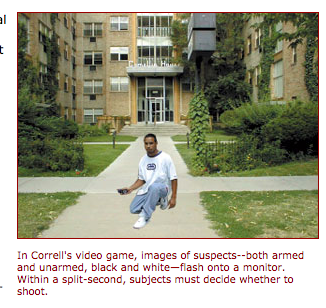
The white subjects were quicker to shoot armed black than white targets, and researchers found that their level of bias correlated with how much contact they’d had previously with black individuals, but not with their self-reported “personal racial prejudices.”
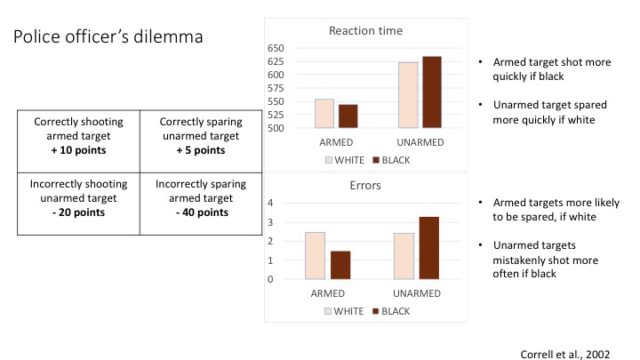
LEARN MORE: Using Ethnicity to Disambiguate Potentially Threatening Individuals
LEARN MORE: The Police Officer’s Dilemma videogame
Binyam also presented research demonstrating enhanced memory for faces of your own racial group. One study found that European Americans (EA in the graph below) had strikingly better recall of other European American faces than for faces of African Americans (AA)…
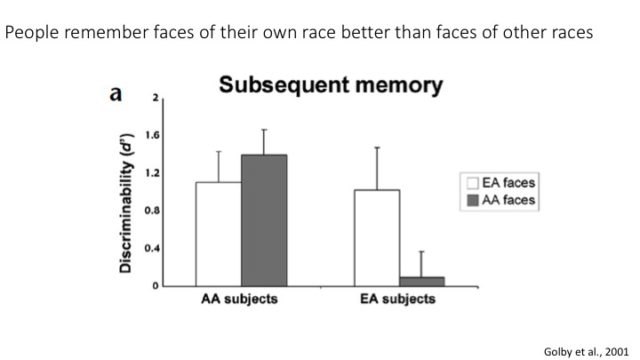
These researchers reported that memory performance correlated with activity changes in a region of the brain essential for face recognition, known as the fusiform face area (FFA)…
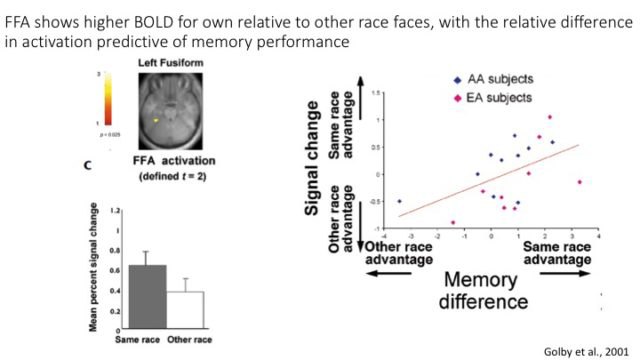

Three face-selective regions are typically found: the FFA in the fusiform gyrus along the ventral temporal lobe of the brain, the OFA in the lateral occipital area and the fSTS in the posterior region of the superior temporal sulcus
LEARN MORE: Differential responses in fusiform region to same-race and other-race faces
LEARN MORE: The fusiform face area: a cortical region specialized for the perception of faces
“Just imagine,” said Binyam, “how this might affect a black man facing an all white jury – or only white eye witnesses.”
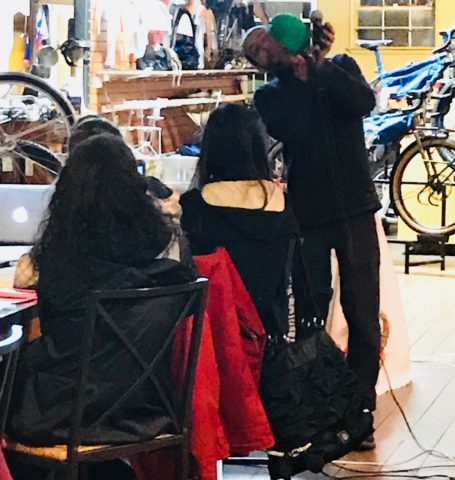
According to Binyam, these findings point to race as an important construct that drives perception, and implicitly biases decision making, which may, at least in part, drive actions taken by law enforcement…
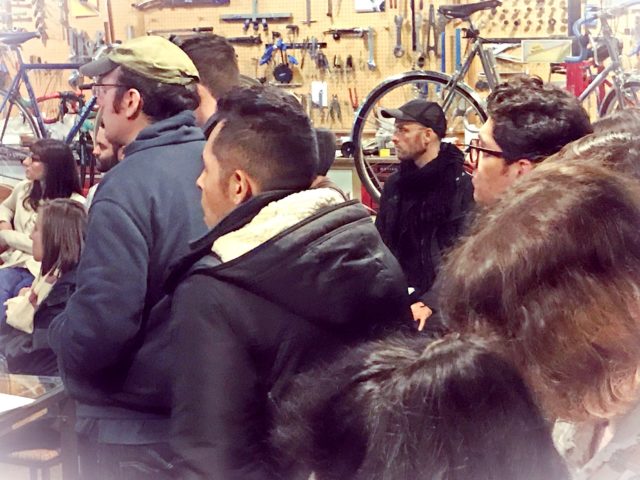
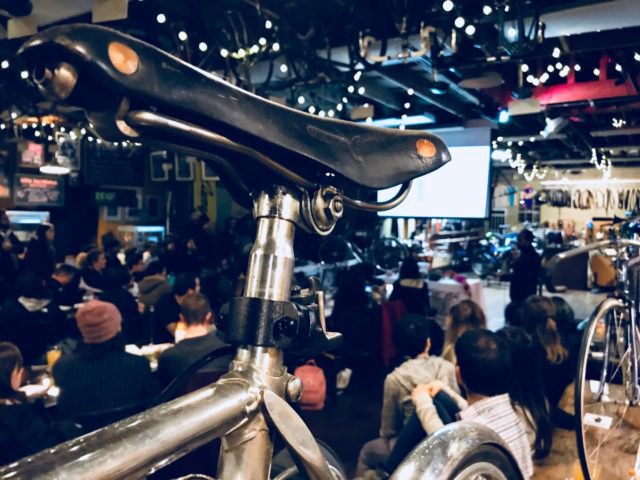
Binyam’s own research, funded by the MacArthur Foundation Research Network on Law and Neuroscience, asks an additional question. Are these types of relationships dependent, or even enhanced, based on the emotional state of the subject making quick decisions?

Binyam found that emotional context affects the brain. His first experiment involved 56 predominantly white subjects (age 18 – 25) who were asked to discriminate facial expressions under three conditions. In the neutral condition, they simply performed the task. However for reward trials, they earned money for answering correctly, while in the threat condition, participants were anticipating delivery of a loud, aversive sound during each trial…
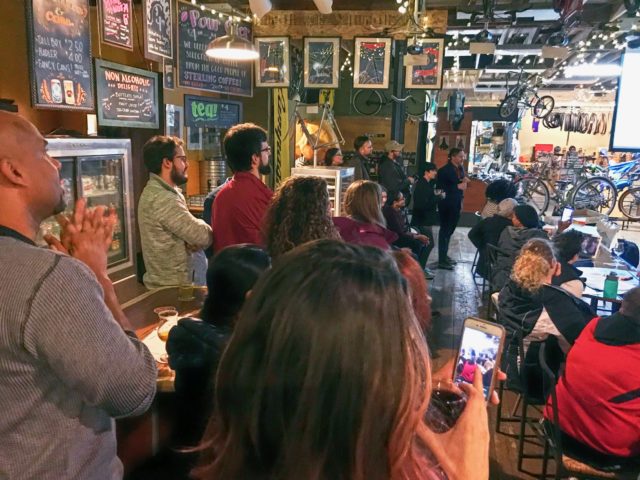
His subjects showed increased right hemisphere fusiform face area (FFA) activation to white faces during the neutral and reward states – but this was reversed during the negative threat context, when black faces provoked a higher response in the FFA than white…
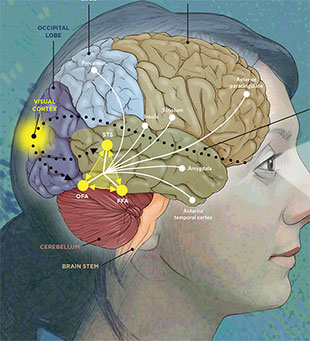
LEARN MORE: A Face to Remember
A second study with a more racially balanced mix of participants (44 black, age 18-36, and 39 white, 19-37) replicated these results. The right fusiform face area (FFA) of white participants again responded more to white than black faces in both neutral and rewarding conditions, and again selectively reversed FFA response to favor black over white faces when under threat.
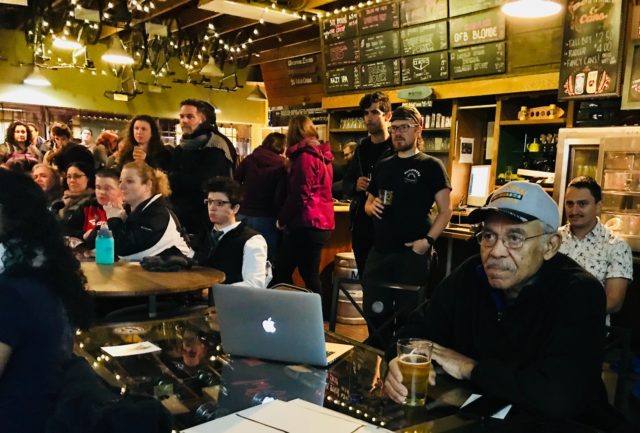
However, in marked contrast, his black subjects showed no such interaction in their FFA between emotional context and race…

In this second experiment, Binyam also found additional effects of context and race on his subject’s behavioral performance in the task. When under threat, all participants, regardless of race, made significantly more false alarms to black than white faces…
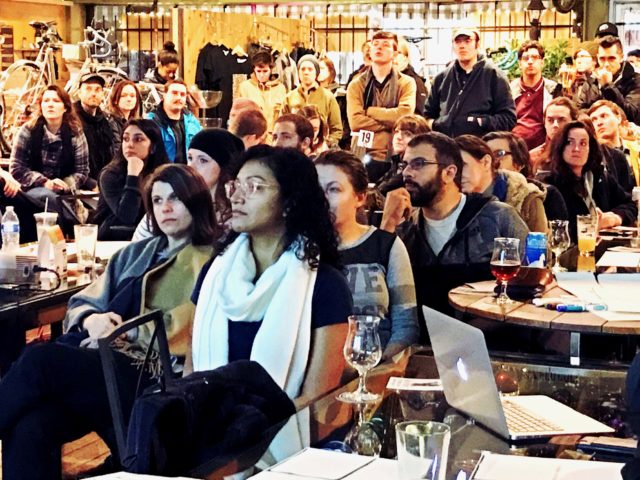
Binyam summarized his findings as follows: “The socioemotional context is clearly an important determinant of race perception. Consider just how threatening and stressful police encounters can be. Behaviorally, threatening contexts result in more false alarms, particularly to black faces. And white subjects selectively reverse their own-race advantage in their FFA – when under threat…”
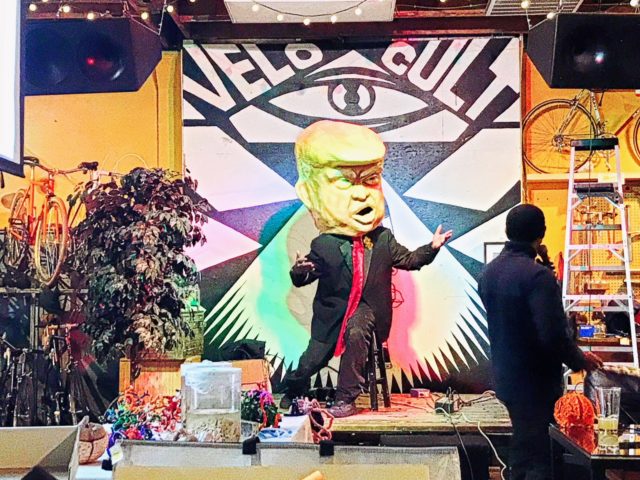
Thanks to Teressa Raiford, and fellow community members Jermaine Harris and Shawntina Ware, we had a striking example of threat in our midst – the current President of the United States. This is a man whose company was sued (twice) by the Department of Justice for discriminating against black rental applicants, who attacked the Muslim parents of a US Army officer, who claimed an American judge born in Indiana was biased because he was Mexican, who repeatedly questioned (without evidence) whether President Obama was born in the United States, who refused to condemn white supremacists supporting his campaign or those involved in terrorist violence in Charlottesville – and who recently referred to Haiti, El Salvador, and African nations as “shithole countries.”
LEARN MORE: Donald Trump’s Racism, The Definitive List
Leaders set the tone, and have impact. There has been a significant rise in hate crimes (against many groups targeted by the President) since the 2016 election…
LEARN MORE: THE TRUMP EFFECT
LEARN MORE: The prejudices of good people
LEARN MORE: Why People Fall for Charismatic Leaders
LEARN MORE: Hate on the Rise After Trump’s Election
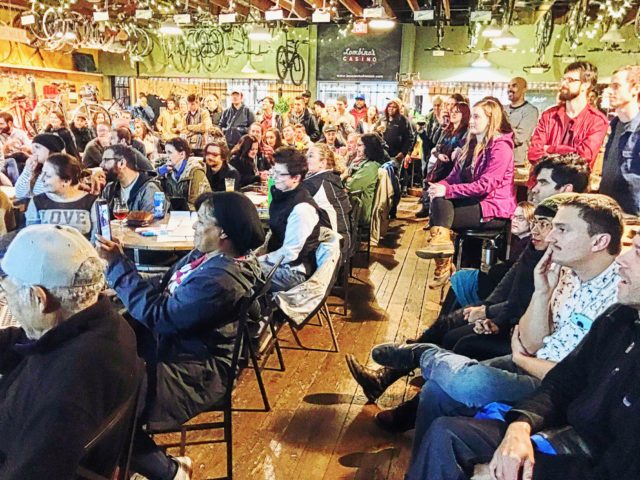
Though as Martin Luther King, Junior searingly charged, in his Letter from a Birmingham Jail, the problem is much deeper than overt racism, or racists.
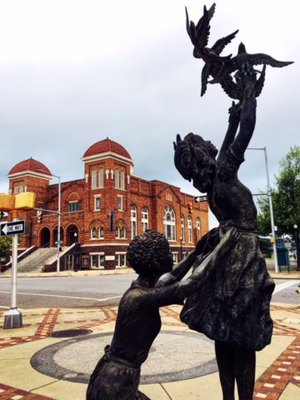
“First, I must confess that over the last few years I have been gravely disappointed with the white moderate. I have almost reached the regrettable conclusion that the Negro’s great stumbling block in the stride toward freedom is not the White Citizen’s Council-er or the Ku Klux Klanner, but the white moderate who is more devoted to ‘order’ than to justice; who prefers a negative peace which is the absence of tension to a positive peace which is the presence of justice; who constantly says ‘I agree with you in the goal you seek, but I can’t agree with your methods of direct action;’ who paternalistically feels he can set the timetable for another man’s freedom; who lives by the myth of time and who constantly advises the Negro to wait until a ‘more convenient season.'” – MLK Junior
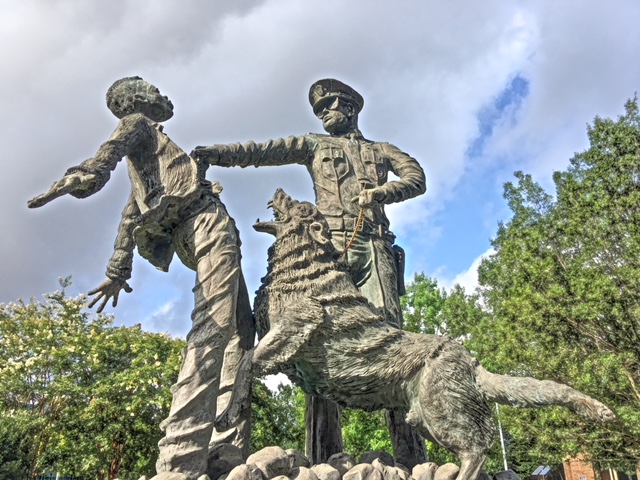
LEARN MORE: Letter from a Birmingham Jail
Binyam invited us to play a game that powerfully revealed our own implicit biases when it comes to race. He asked everyone to clap when they saw either a black face or a positive (“good”) word, and stomp their feet when they saw a white face or a negative (“bad”) word…

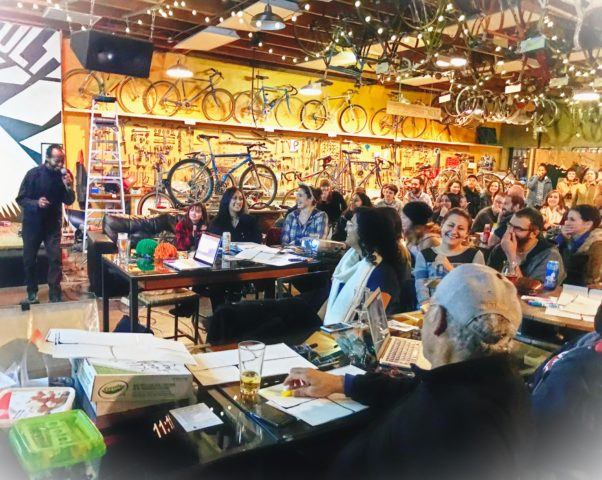
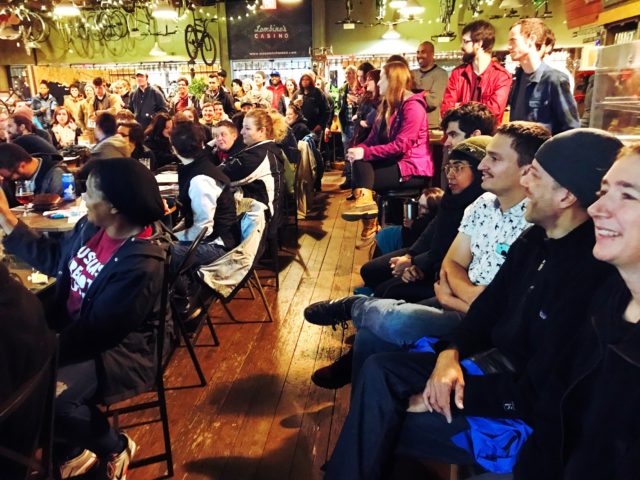
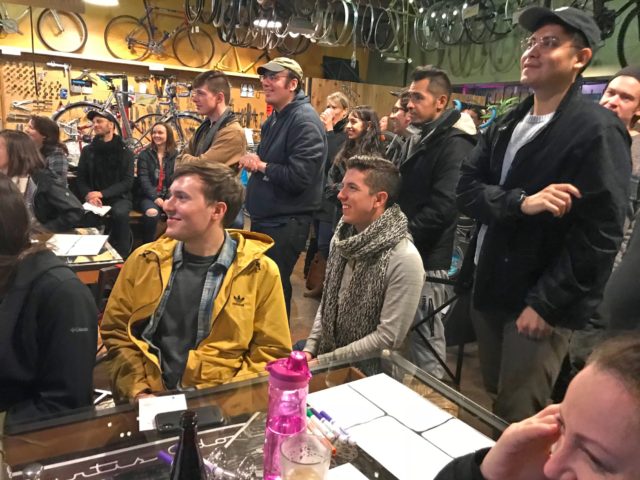
This was both engaging, and instructive – many people clearly had difficulty! And this direct demonstration of personal bias, and our own conflicting reactions to faces of different races, and our own implicit association of white with good, black with bad – in racist times, with openly hostile political leaders – also suggests our own complicity in maintaining the current “order…”
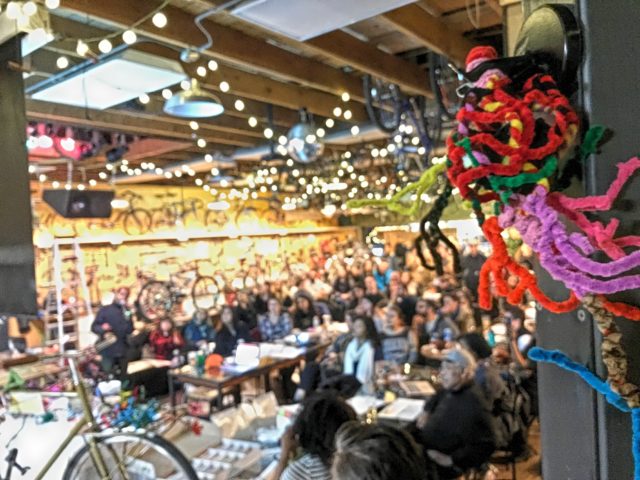
When Republican “moderates” repeatedly fail to seriously call out Trump for his racism with actual consequences, when a state university president fails to take meaningful action after a student leader joins violent hate marches in Virginia – and when we also fail to speak up, challenge, engage and demand justice and accountability in the face of assaults on our community, we are clearly and shamefully the white moderates, too…
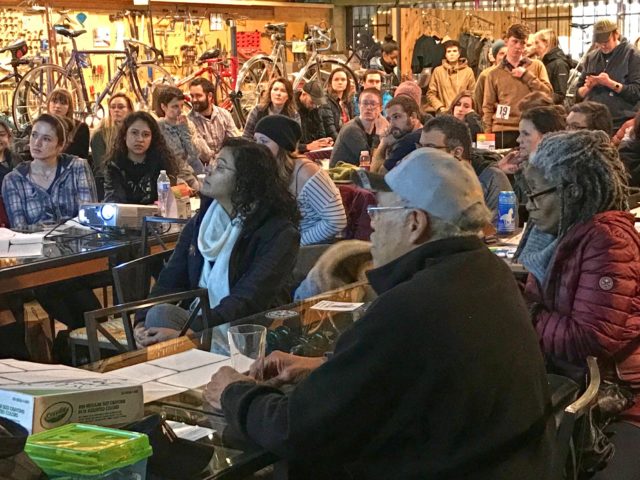
Teressa spoke passionately, powerfully, furiously about this untenable situation, her voice rising to the bike-hung rafters at Velo Cult. “I’m a fourth generation Oregonian,” she began. “And I’m angry! Why? Knowing by the time we’re 7 years old, institutions have identified us as incarcerated individuals! Knowing that by the time we’re teens, we’re ‘juveniles,’ a criminal term…”
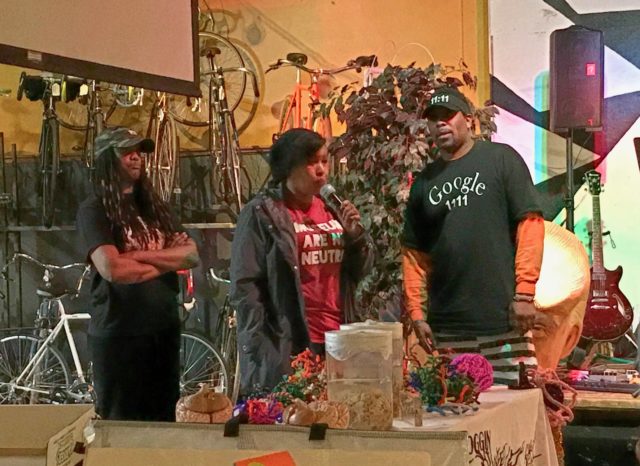
“I’ve been characterized as an angry black woman because I’m afraid my kids, my friends are gonna get murdered. All I’m trying to do is breathe! If the privilege of your bias means I have to live in fear – if you’re afraid of me, afraid of my family, afraid of an angry black woman – then you’re not going to teach my children, you’re not going to send your kids to my kids’ school, you’re not going to treat my illness, you’re not going to hire me…”
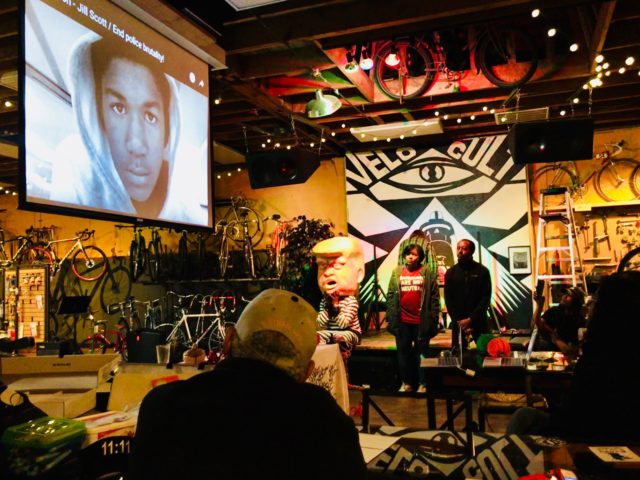
“If you’re not an angry black woman in 2018 something is wrong with you.”
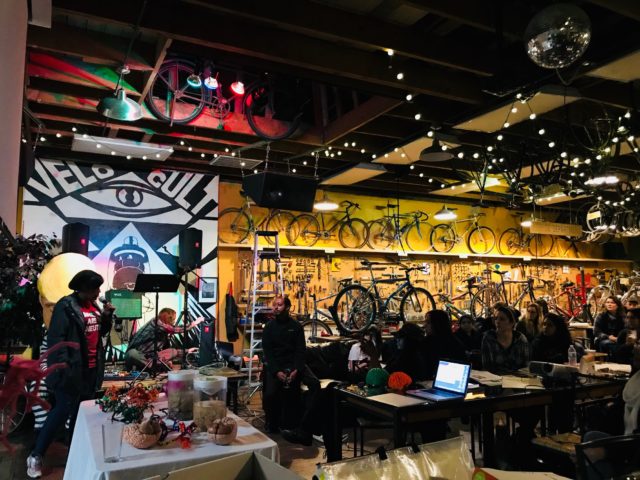
“I’ve sat in gang task force meetings so new white neighbors feel safer. They’re afraid of black boys playing in a park, and demand police interrogate, humiliate, investigate! New white neighbors – I’m not going to eat your babies! Kids make you feel uncomfortable so you’re going to report them, so police can tase them, shoot them, cuff them?!”
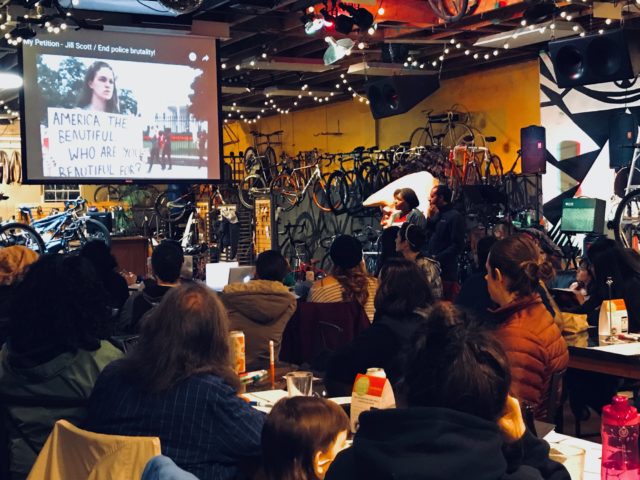
“They won’t lose the marks from a taser – that stays there! Being black don’t make you supernatural – it’s just darker. DROP THE BIAS!“
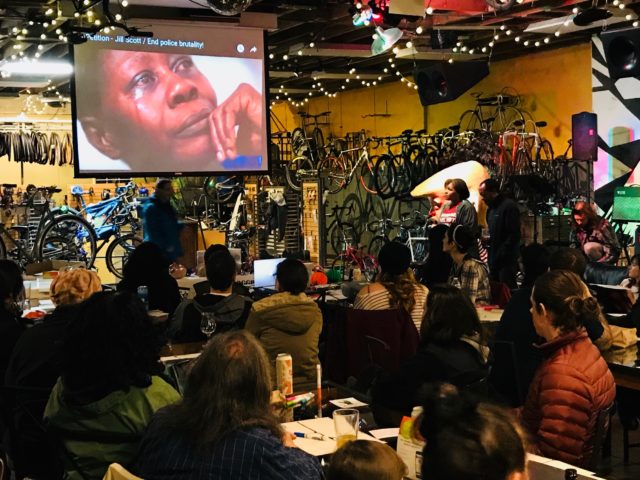

Don’t Shoot Portland SLIDES: Velo Slide Show
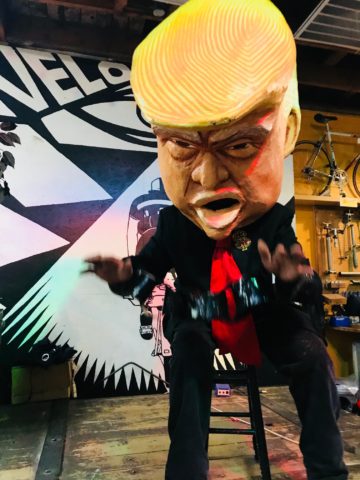
Jermaine as Trump was initially a compelling threat, arriving on the Velo stage in a suit and signature long red tie while spouting menacing quotes that demonstrably raised hackles…
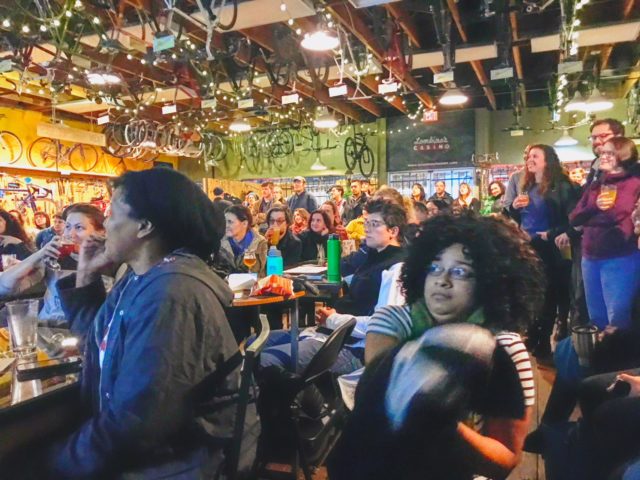

Yet as the night progressed, this Trump began to change…

He was handcuffed. And he sulked…
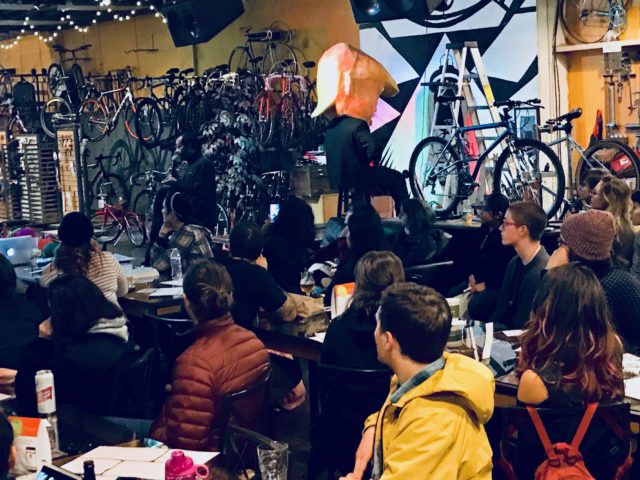
Shawntina took Trump to task for his actions, berating him for abusing his role as President, and demanding that he face consequences. And he started to apologize! Trump galumphed around Velo Cult in prison stripes, expressing remorse for his behavior, and his role in encouraging bias, and prejudice, and endangering so many families, friends and members of our community…
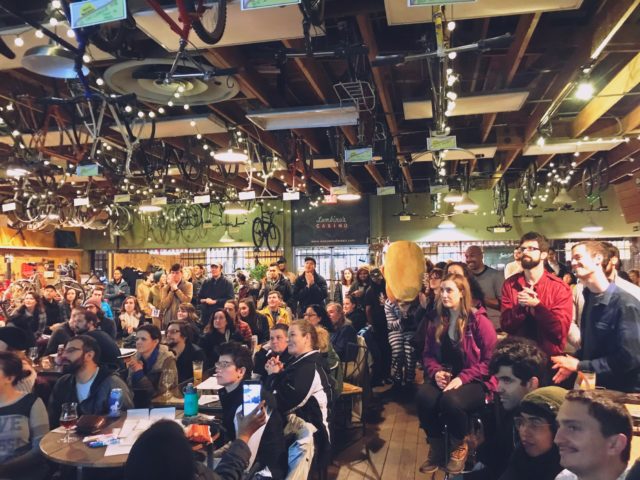

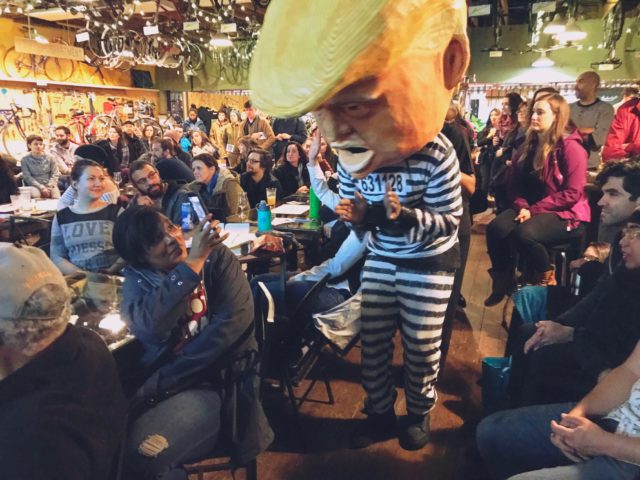

“Freedom is never voluntarily given by the oppressor; it must be demanded by the oppressed.” – MLK Junior, Letter from a Birmingham Jail
When people are actually held accountable, and take responsibility – or are forced to by others who find their courage, discover their voice, and speak out to change an unconscionable order – the threat recedes. When research reveals the extent of our own biases, we can become conscious of them and – particularly when we have some measure of privilege or power – change ourselves and act.
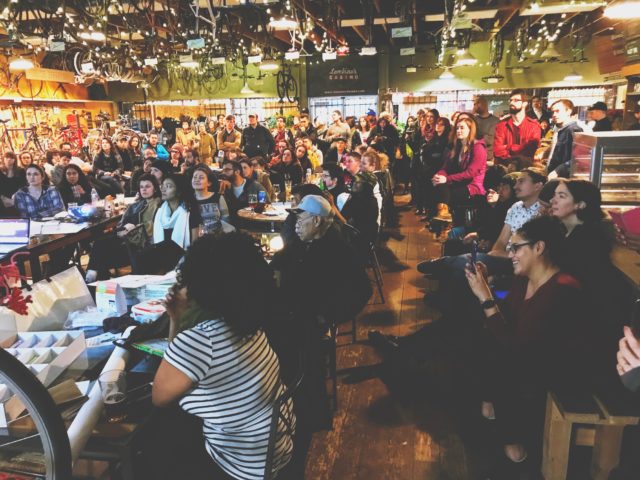
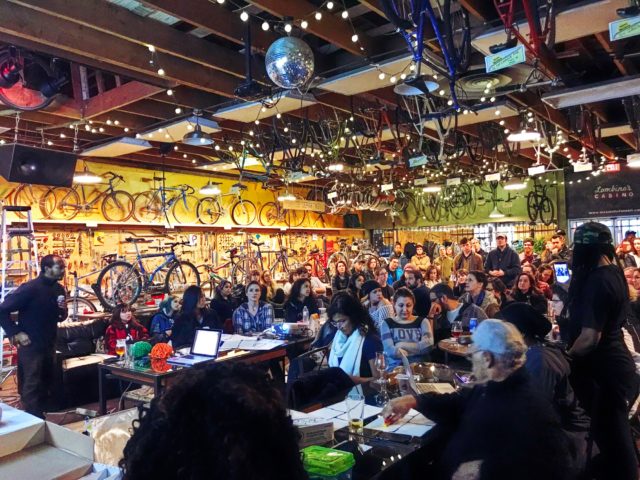
The audience was moved. People took the mike to offer testimony – stories of their own pain and struggle, their stress under threat, their experience of being monolithically lumped together (“the blacks,” “the Mexicans,” “the homeless,” “the gays,” even “the press“) and collectively demonized, dehumanized and demeaned. Even small incidents of bias add up, and research suggests that cumulative exposure to stressors (“weathering”) can damage our bodies and brains…
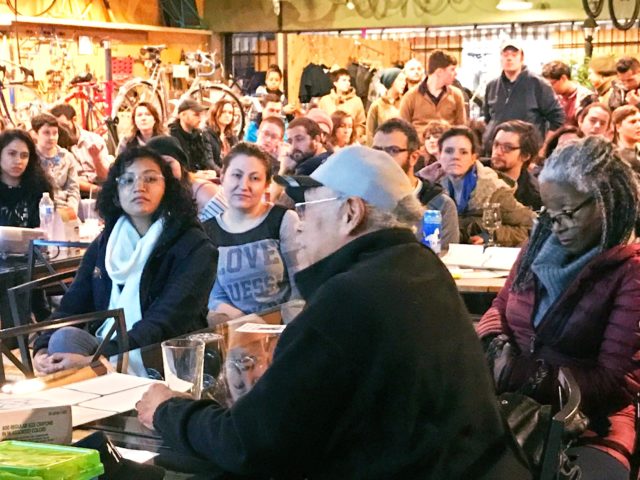
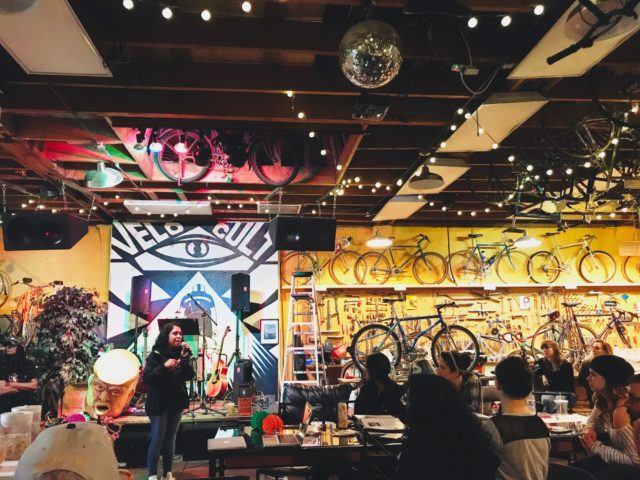
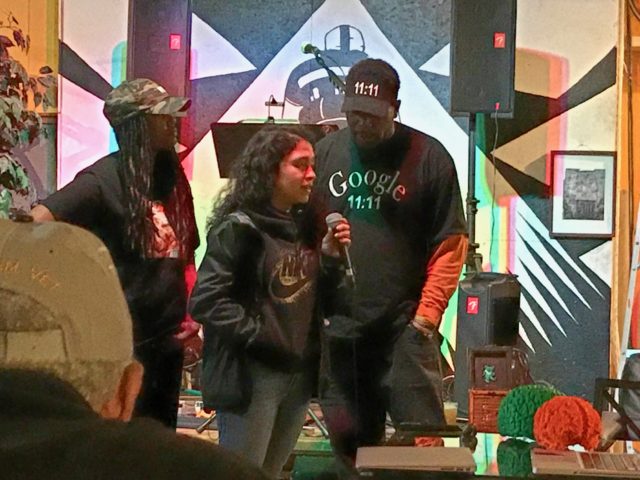
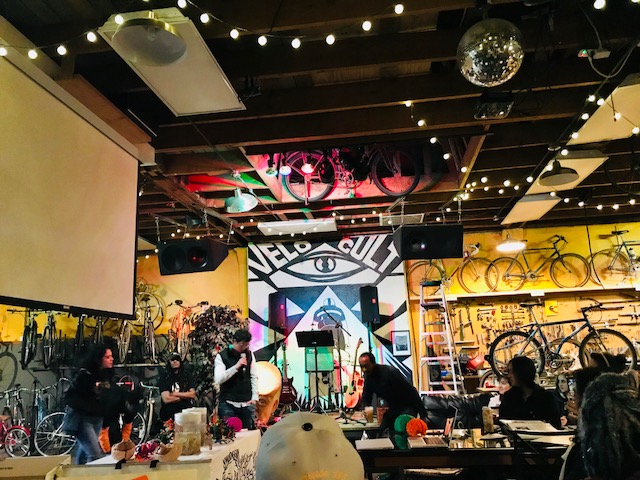
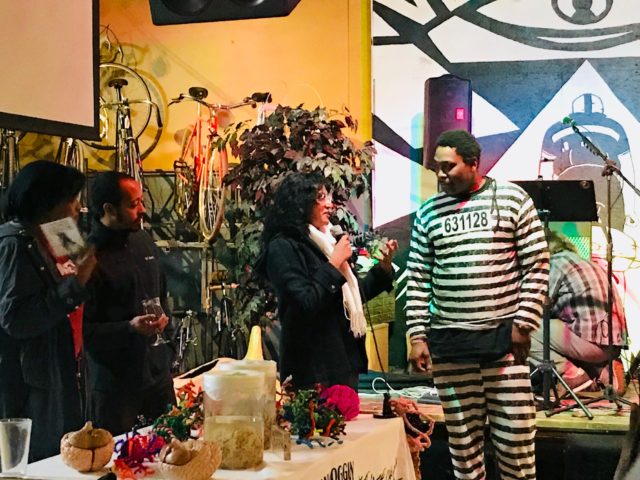
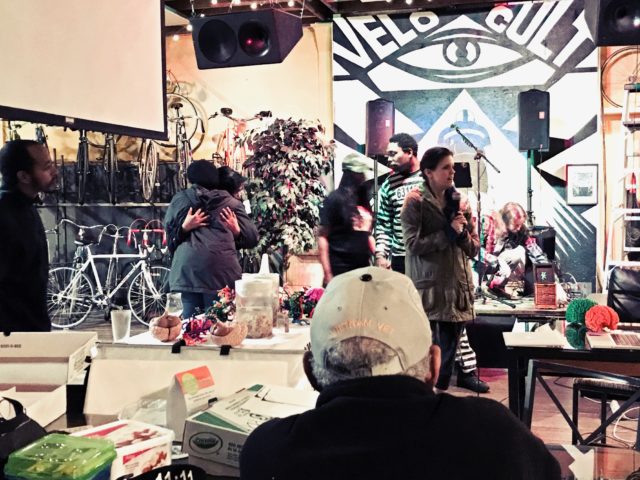
LEARN MORE: “Weathering” and Age Patterns of Allostatic Load Scores Among Blacks and Whites in the United States
LEARN MORE: Racism as a Determinant of Health: A Systematic Review
LEARN MORE: Allostatic Load Burden and Racial Disparities in Mortality
Binyam and Teressa asked: “We know there is a problem. Is there a solution?”
Not knowing what to do, or how to engage, stops many from connecting effectively and speaking out. Teressa suggested that one of our biggest difficulties is a lack of communication. “We don’t communicate with our own neighbors, with the people next door…”
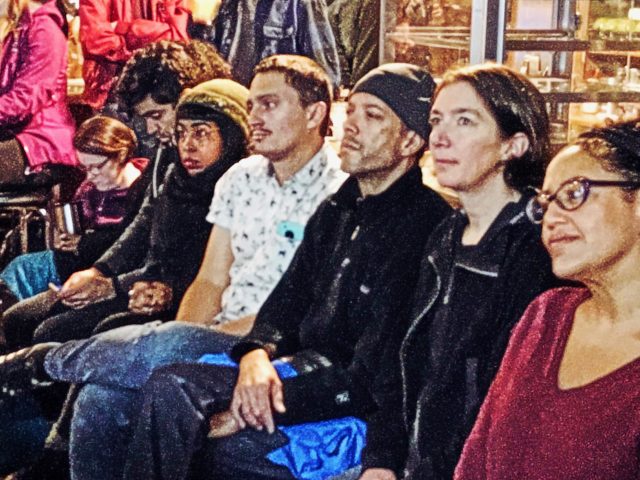
“Social media is a disaster,” she added. “The less we communicate with each other, the worse this segregation gets. If we start talking, communicating, dialoguing, we realize the apple pie is rotten, the Stars and Stripes are slashes, and we’d better get it together, take off the masks, face the bias – we’re all just human. Let’s make it different – talk to people, use your brain…”
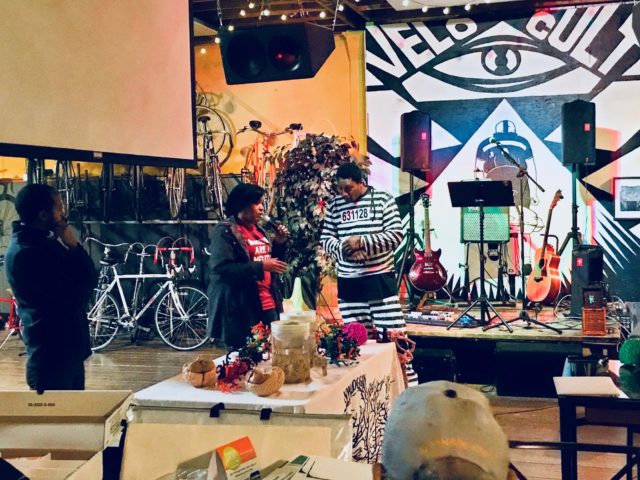
And make art. Many thought hard about bias and connection, fear and engagement, and started writing out thoughts and ideas on panels for a wall. However, this is not a wall meant to keep people segregated and frightened, distant and apart. Don’t Shoot Portland hopes to bring their wall, and its panels of ideas from people of all backgrounds to Washington, DC later this year…
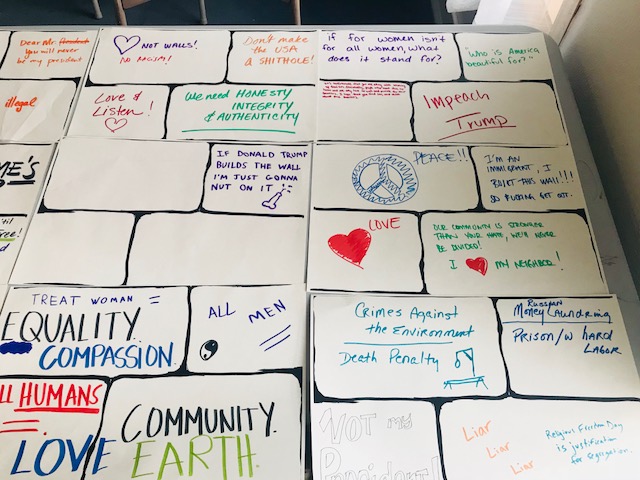
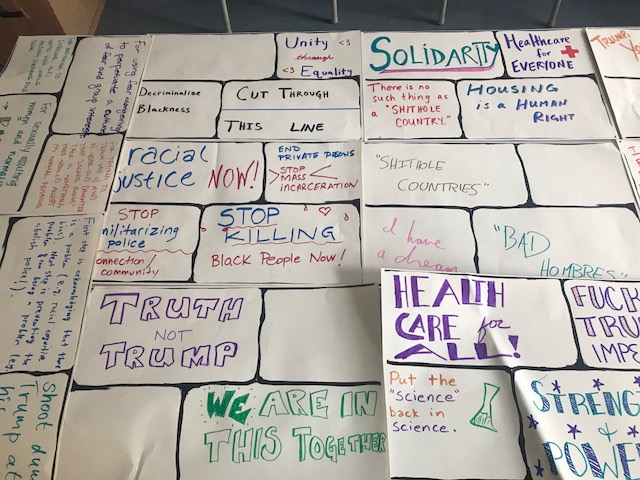
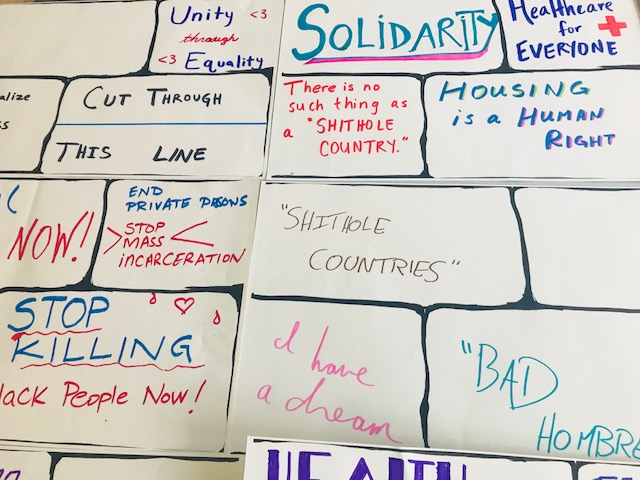
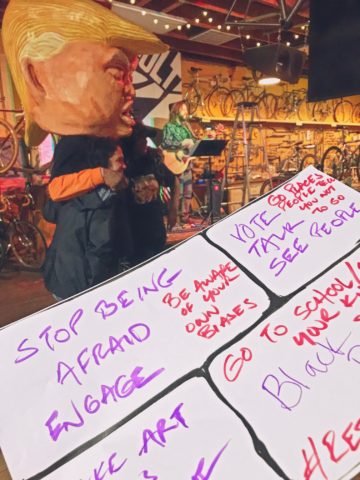
LEARN MORE: Landscapes of the Brain: Seeing us all through research & art
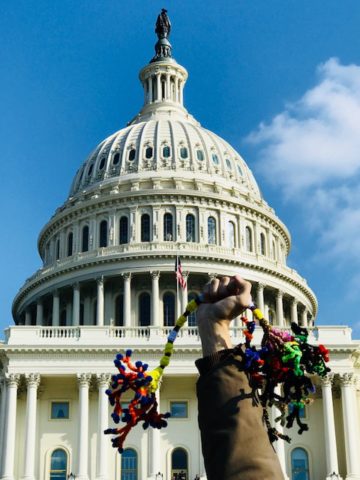
Contacting legislators might feel burdensome, but it’s also important, and essential in a functioning democracy. We can and should advocate for our community priorities, including more investment in healthcare, education, science, and the arts and humanities that help train and inspire the next generation to make our home a better place for all…
ACT: You can do it!
Oregon US Senators
Ron Wyden (D)
Jeff Merkely (D)
Oregon US Representatives
1st District Suzanne Bonamici (D)
3rd District Earl Blumenauer (D)
4th District Peter DeFazio (D)
5th District Kurt Schrader (D)
Washington US Senators
Patty Murray (D)
Maria Cantwell (D)
Washington US Representatives
3rd District Jaime Herrera Beutler (R, Southwest Washington)
5th District Cathy McMorris Rogers (R, co-chair of Neuroscience caucus)
Links to additional Washington State US Representatives
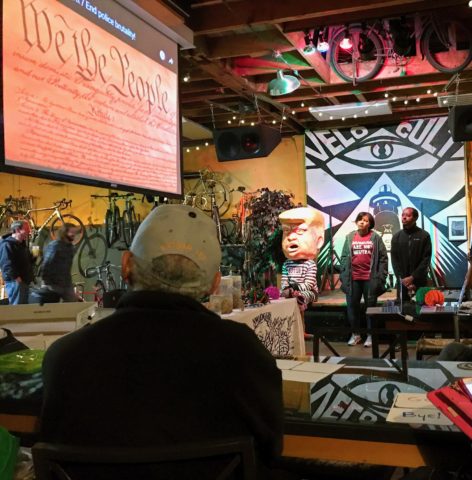
So many thanks to Binyam, Teressa and Velo Cult for a powerful evening of neuroscience research, art, action and activism!
